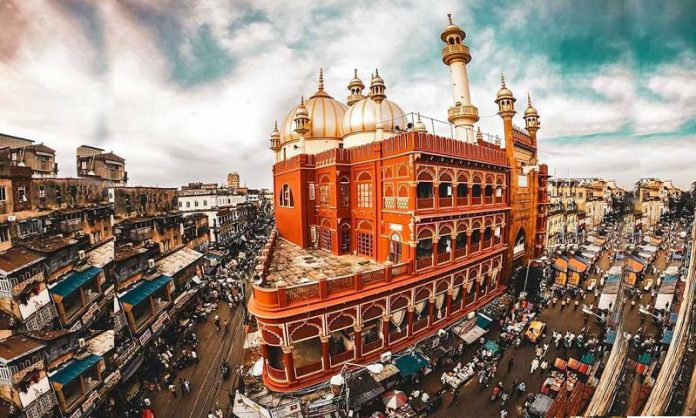Muslims in West Bengal are often treated as a “political non-factor” except during elections. This in-depth report explores their shifting allegiances, socio-economic realities, and evolving role in state politics.
By Dr. Mohammad Farooque | Qalam Times News Network
Kolkata | September 07, 2025
The Illusion of the Political Non-Factor
The label of being a political non-factor has trailed Muslims in West Bengal for decades. Despite constituting nearly 30% of the state’s population and holding sway over 70–80 assembly seats, their influence is regularly minimized in the mainstream narrative except during election cycles, when their numerical strength becomes a strategic focus for politicians.
Muslims in West Bengal: Historic Legacies and Demographic Shifts
Partition in 1947 led to major demographic transformations in Bengal. Post-independence, about 25% of West Bengal’s population were Muslims. Despite their numbers, the community faced heightened vulnerability due to waves of refugee resettlement and periodic communal violence. These conditions shaped their early political choices, pushing them toward parties promising inclusion and security rather than visibility.
Throughout the 1950s and 1960s, Muslims largely aligned with the Indian National Congress, supporting a party that, at least nominally, stood for secularism and stability. Their early support helped keep communal parties like the Muslim League from gaining a foothold in West Bengal. However, by the late 1960s, disillusionment grew due to continued marginalisation, lack of advancement, and Congress’s inability to protect Muslims during times of communal tension. Despite participation, their demands and interests remained largely overlooked—an early foreshadowing of becoming a political non-factor.

The Left Front Years: Support, Disenchantment, and Exodus
From 1977, the Left Front enjoyed robust Muslim support, thanks to its secular and pro-poor image. Muslims were seen as a reliable voting bloc for Left candidates, often even at the expense of independent or Muslim League candidates. However, the Sachar Committee’s 2006 findings revealed deep-seated disadvantages for Muslims in Left-ruled Bengal: high poverty rates, low education, minimal government employment (under 4.2% of government jobs despite a 25% population share), and under-representation in political institutions. The Left’s approach revealed a persistent pattern: Muslims voted in large numbers, but their pressing socio-economic concerns were largely neglected—the essence of being branded a political non-factor.
The Nandigram violence and targeted statements by Left leaders—for example, labelling madrassas as “dens of terrorism”—sparked further alienation. By the time of the 2009–2011 elections, Muslim support had shifted decisively to the Trinamool Congress, leading to the Left’s historic defeat in Muslim-majority constituencies like Murshidabad, Malda, and Birbhum.
Trinamool Congress and the Muslims in West Bengal
Since coming to power in 2011, the Trinamool Congress (TMC), led by Mamata Banerjee, has been widely regarded as the political force that best consolidated Muslim votes in West Bengal. The party’s approach combined strategic affirmative action, symbolic outreach, and political positioning against the rise of the Bharatiya Janata Party (BJP) and its perceived communal agenda.


Inclusion through Reservation Policies
One of the key pillars of TMC’s engagement with the Muslim community has been the expansion of social justice initiatives, particularly through reservations. The TMC government successfully got around 95% of Muslims included under the Other Backward Classes (OBC) category, making them eligible for a 17% quota in education and government employment—an important step given the historically marginalized socio-economic position of many Bengali Muslims. This inclusion increased Muslim representation in government jobs from roughly 3.4% under the previous Left Front to around 5.7% during the TMC’s decade-long governance.


The TMC also dramatically boosted scholarship schemes, raising the amount awarded for post-matriculation and post-master’s education, which helped Muslim students compete better in higher education entrance exams such as the NEET. Additionally, small commercial loans and microfinance to Muslim entrepreneurs have increased under TMC policies, expanding economic opportunities in the community.
Political Representation and Electoral Strategy
Despite these positive steps, Muslim political representation within the TMC’s power structure has had its ups and downs. After an initial increase in Muslim cabinet members following the 2011 victory, their numbers have fluctuated and notably declined by the 2021 election cycle, falling back to levels seen during the Left regime. Similarly, the number of Muslim MLAs fielded by TMC dipped in recent elections, sometimes lower than the Left Front-Congress alliance’s numbers in same periods.
Politically, TMC’s narrative has revolved around projecting itself as the secular bulwark against the BJP’s Hindutva-driven politics, thereby consolidating Muslim votes as a loyal core. Mamata Banerjee’s vociferous opposition to the Citizenship Amendment Act (CAA) and National Register of Citizens (NRC), and her promise not to implement these laws in West Bengal, further cemented this trust. This provided a strong electoral advantage in Muslim-majority districts, seen clearly in TMC’s ability to secure nearly 75% of Muslim votes in 2021.
Challenges and Criticisms
However, despite the electoral successes, there remain significant socio-economic challenges for Muslims under TMC rule. Data points to persistent disparities: remote Muslim-majority areas suffer from poor infrastructure, low literacy rates, and underemployment. Employment opportunities remain disproportionally low; only about 13% of Muslims in West Bengal hold regular salaried jobs compared to the national average of 22%, and many remain in casual or informal work sectors.
Communal tensions and politically motivated violence have also risen during TMC rule. Incidents of communal riots and clashes have surged in recent years, leading to increased insecurity among minority communities as well as others. Some critics point to a failure by the government to act decisively on communal violence, with accusations of politicians welcoming accused perpetrators into party ranks shortly after incidents.
Symbolic Outreach and Social Integration
Beyond tangible policies, TMC has engaged in symbolic outreach as well, including appeals to Muslim cultural and religious sentiments—for example, requests to moderate traditional Muharram procession practices to avoid communal tensions. Such measures were aimed at balancing community sentiments while preventing flashpoints.
Looking Ahead
The TMC’s relationship with the Muslim electorate remains pivotal for its continued success. While the party enjoys strong loyalty, the trend of Muslim voters shifting slightly toward Left and Congress alternatives in local elections signals a need for renewed focus on governance and inclusive development. Overpromising without adequate delivery risks eroding support over time.
BJP’s Rise and the Limits of Mobilisation
The 2021 Assembly election marked an unprecedented contest, with the BJP seeking to challenge TMC’s dominance. BJP’s campaign highlighted issues like alleged illegal immigration, NRC-CAA, and population anxieties—messaging that attempted to sideline and demonize minority voters. However, rather than splintering the Muslim vote, BJP’s aggressive messaging consolidated minority voters behind TMC. New alliances, such as the Indian Secular Front, failed to dent this unity.
Manufactured Myths: “40% Population” and the Census Delay
Ahead of the 2021 polls, exaggerated claims that Muslims were “40%” of West Bengal’s population circulated widely. In truth, the last (2011) census placed the figure at 27%. The long delay in conducting a fresh census allowed such misinformation to proliferate, feeding narratives that painted Muslims as a threat—yet treating them as a political non-factor when it came to policy and representation.
Electoral Realities: Numbers, Influence, and the Path Forward
While Muslims determine outcomes in 70–80 of 294 assembly seats, their influence rarely translates into sustained political agency. After each election, policy discussions and development priorities routinely revert to neglect. Indicators like high poverty rates, low education levels, and under-representation in public institutions persist, reinforcing the sense that substantive empowerment remains elusive.
Moving Beyond “Political Non-Factor”
West Bengal’s Muslims play a pivotal role in every major election, disproving the notion of being mere electoral fodder or a political non-factor. Their support has never been unconditional; rather, it has shifted across major parties in response to socio-economic needs, recognition, and promises kept—or broken. As the 2021 elections show, communal polarisation alone is not enough for victory: development, dignity, and honest outreach matter far more to this community’s evolving political choices.







